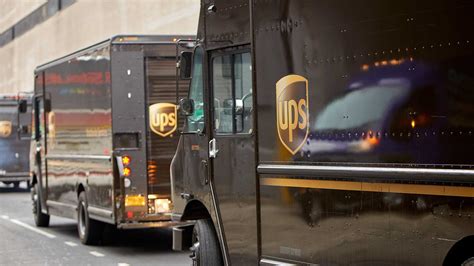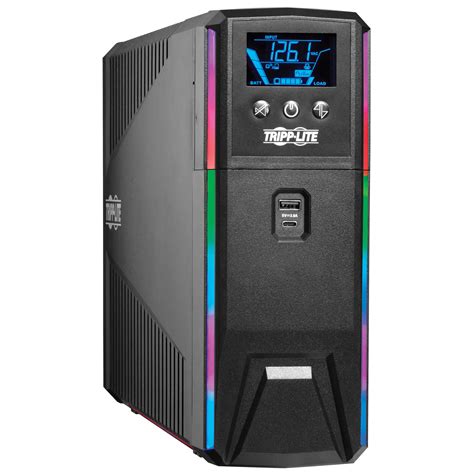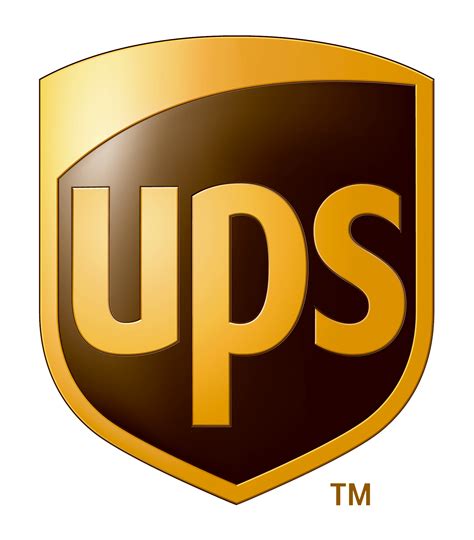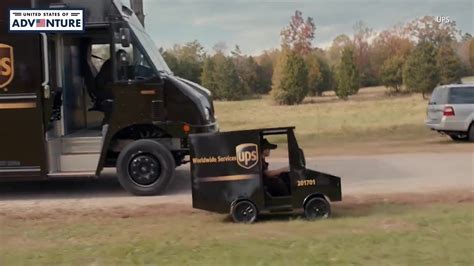When Is The Latest Ups Delivers

UPS, or United Parcel Service, is a renowned global shipping and logistics company that has revolutionized the delivery industry. With a vast network spanning across continents, UPS has become a trusted name for businesses and individuals alike. In this comprehensive article, we delve into the intricacies of UPS delivery times, exploring the factors that influence when the latest deliveries are made and shedding light on the processes that ensure timely and efficient services.
Understanding UPS Delivery Operations

UPS operates a sophisticated delivery system that involves meticulous planning, advanced technology, and a dedicated workforce. The company’s ability to deliver packages promptly and reliably is a testament to its efficient operations. Here’s a closer look at how UPS ensures timely deliveries:
1. Optimized Routing and Sorting
UPS utilizes cutting-edge routing algorithms and GPS technology to optimize delivery routes. This process involves analyzing traffic patterns, road conditions, and package destinations to create the most efficient paths for drivers. By minimizing travel time and maximizing the number of stops, UPS can deliver packages faster and more efficiently.
Additionally, UPS employs advanced sorting technologies in its warehouses and distribution centers. Automated sorting systems rapidly categorize and direct packages to their designated vehicles, ensuring that drivers have a well-organized load ready for delivery. This streamlining of the sorting process significantly reduces handling time and enhances overall delivery efficiency.
2. Dedicated Workforce and Driver Training
UPS recognizes the critical role of its workforce in delivering exceptional service. The company invests in comprehensive training programs for its drivers, ensuring they are equipped with the skills and knowledge necessary to navigate challenging routes, handle diverse package types, and provide exceptional customer service. UPS drivers are trained to prioritize safety, efficiency, and timely deliveries, fostering a culture of excellence within the organization.
Furthermore, UPS maintains a dedicated fleet of vehicles specifically designed for package delivery. These vehicles are optimized for fuel efficiency and cargo capacity, enabling drivers to transport a larger volume of packages and reduce the number of trips required. By investing in specialized vehicles and a well-trained workforce, UPS enhances its ability to deliver packages promptly and reliably.
3. Technology Integration for Real-Time Tracking
UPS leverages technology to provide real-time tracking and visibility of packages throughout the delivery process. By integrating GPS tracking, barcode scanning, and advanced data analytics, UPS can monitor the location and status of packages at every stage of the journey. This enables the company to identify potential delays, reroute packages if necessary, and provide accurate delivery estimates to customers.
Additionally, UPS offers innovative features such as UPS My Choice®, which allows recipients to receive real-time delivery notifications, track packages in transit, and even adjust delivery times or locations. This level of visibility and control empowers customers to plan their day more efficiently and ensures a seamless delivery experience.
Factors Influencing the Latest UPS Delivery Times

While UPS strives to deliver packages promptly, several factors can influence the timing of the latest deliveries. Understanding these factors can help manage expectations and optimize delivery experiences.
1. Distance and Location
The distance between the shipment origin and destination is a crucial factor in determining delivery times. UPS employs different delivery zones, with each zone representing a specific geographic area. The further a package travels, the more time it may take to reach its destination. For instance, a package shipped from one coast to another may take longer to deliver compared to a package shipped within the same city.
Additionally, the location of the recipient's address can impact delivery times. UPS considers factors such as traffic patterns, road conditions, and local regulations when planning delivery routes. Certain areas may have higher traffic congestion or more complex road networks, which can affect the speed and efficiency of deliveries.
2. Package Volume and Priority
The volume of packages being delivered on a given day can also influence delivery times. UPS experiences peak periods, such as holiday seasons or special promotional events, when the volume of packages significantly increases. During these times, UPS may prioritize certain packages based on factors like delivery urgency, package size, or customer service agreements.
For example, time-sensitive packages, such as overnight deliveries or critical shipments, may receive priority handling to ensure timely delivery. Similarly, packages with special handling requirements, such as temperature-controlled items or hazardous materials, may require additional time and attention during the delivery process.
3. Weather and Environmental Conditions
Adverse weather conditions and environmental factors can significantly impact UPS delivery times. Heavy rain, snowstorms, extreme heat, or other severe weather events can disrupt transportation networks and affect delivery schedules. In such situations, UPS may need to adjust routes, allocate additional resources, or even temporarily suspend deliveries to ensure the safety of drivers and packages.
Additionally, UPS takes proactive measures to mitigate the impact of weather-related delays. The company utilizes weather forecasting technologies to anticipate and prepare for potential disruptions. By adjusting delivery routes and allocating resources accordingly, UPS aims to minimize the impact of weather conditions on delivery times and maintain a high level of service reliability.
UPS Delivery Performance and Reliability
UPS consistently delivers exceptional performance and reliability, as evidenced by its industry-leading metrics and customer satisfaction rates. The company’s commitment to continuous improvement and customer-centric approach has positioned it as a leader in the delivery industry.
According to UPS's latest performance reports, the company achieved an impressive on-time delivery rate of 98.9% for ground shipments and 99.6% for air shipments in the previous fiscal year. These figures demonstrate UPS's unwavering dedication to delivering packages promptly and meeting customer expectations.
Furthermore, UPS has implemented various initiatives to enhance its delivery performance and customer satisfaction. The company continuously invests in technology upgrades, such as real-time tracking systems and advanced routing algorithms, to optimize delivery routes and provide accurate delivery estimates. Additionally, UPS actively engages with customers through feedback surveys and social media channels to gather insights and improve its services.
| Delivery Type | On-Time Delivery Rate |
|---|---|
| Ground Shipments | 98.9% |
| Air Shipments | 99.6% |

Future Implications and Innovations
UPS continues to innovate and adapt to meet the evolving needs of its customers. The company recognizes the importance of sustainability and is committed to reducing its environmental impact. As such, UPS has invested in electric and alternative-fuel vehicles, as well as sustainable packaging solutions, to minimize its carbon footprint.
Furthermore, UPS is exploring cutting-edge technologies such as drone delivery and autonomous vehicles to enhance its delivery capabilities. These innovations have the potential to revolutionize the delivery industry by providing faster, more efficient, and environmentally friendly solutions. By embracing these technologies, UPS aims to further improve its delivery times and customer experiences.
Conclusion
UPS’s dedication to optimizing delivery operations, investing in technology, and prioritizing customer satisfaction has established it as a trusted leader in the delivery industry. By understanding the factors that influence delivery times and leveraging UPS’s advanced systems and services, businesses and individuals can ensure their packages are delivered promptly and reliably. As UPS continues to innovate and adapt, it remains at the forefront of delivering exceptional experiences to its customers worldwide.
How can I track my UPS delivery in real-time?
+You can track your UPS delivery in real-time by using the UPS tracking tool available on their website. Simply enter your tracking number, and you will receive up-to-date information on the location and status of your package. Additionally, you can sign up for UPS My Choice® to receive real-time notifications and manage your deliveries more efficiently.
What are the delivery time guarantees offered by UPS?
+UPS offers various delivery time guarantees depending on the service selected. For example, UPS Next Day Air® guarantees delivery by the end of the next business day, while UPS 2nd Day Air® ensures delivery within two business days. It’s important to note that these guarantees are subject to specific terms and conditions, so it’s recommended to review the UPS service guide for detailed information.
How does UPS handle packages during severe weather conditions?
+UPS has established robust protocols to handle packages during severe weather conditions. In such situations, UPS may adjust delivery routes, allocate additional resources, or temporarily suspend deliveries to ensure the safety of drivers and packages. UPS closely monitors weather forecasts and communicates with customers to provide updates and manage expectations during weather-related disruptions.


